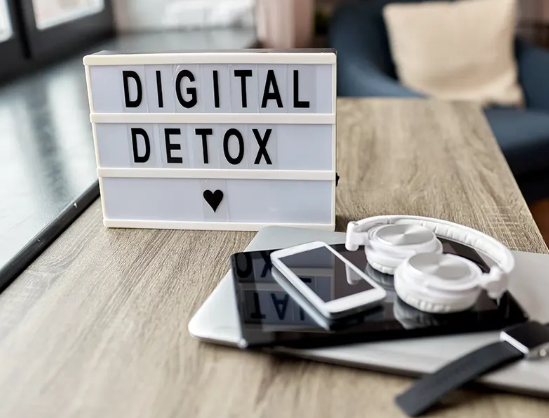Wellness in 2025 looks… different. After years of biohacking, buzzy diets, and performative self-care, the industry is undergoing a noticeable shift: from optimization to restoration, from restriction to ritual, and from intensity to intentionality. Consumers are moving away from extremes and toward practices that feel sustainable, rooted, and genuinely nourishing.

Here’s a breakdown of what’s in and what’s quickly phasing out in this new, softer wave of wellness.
🌿 What’s In
1. Regenerative Travel
Forget over-scheduled wellness retreats. In 2025, travel isn’t about “detoxing” your stress—it’s about reconnecting with nature, culture, and yourself in a meaningful way. Regenerative travel goes beyond eco-tourism; it supports local communities, prioritizes environmental sustainability, and helps travelers return home restored rather than exhausted.
Think: hiking in protected indigenous lands with local guides, staying in solar-powered boutique lodges, or immersing in slow, ceremonial travel experiences that are as spiritually rich as they are scenic.
2. Sleep as a Sacred Practice
We’ve stopped glorifying 5 a.m. hustle culture—and started honoring sleep as the foundation of mental and physical health. In 2025, sleep is no longer a “recovery tool”; it’s a priority, with its own wellness ecosystem.

From high-tech circadian lighting and AI-assisted sleep coaching to herbal adaptogen teas and sleep-enhancing home design (hello, blackout blinds and cool-toned bedrooms), rest is finally getting the respect it deserves.
3. Nervous System Care
Mental health in 2025 goes beyond journaling and therapy—it’s now about regulating your nervous system. The rise of somatic healing, breathwork, cold exposure, and “vagus nerve” training reflects a growing understanding of how stress lives in the body.
Popular tools include wearable stress monitors, trauma-informed yoga, and gentle movement practices like qigong and lymphatic massage—all designed to help the body feel safe, not just strong.
4. Nature-Based Rituals
Grounding, forest bathing, sea soaking, moon mapping—call them what you will, but elemental rituals are back. As digital fatigue deepens, people are turning to ancient practices rooted in the natural world for balance, joy, and meaning.lips, and cheeks with equal charm.

Whether it’s barefoot walking, herbalism, or syncing your routine to lunar cycles, the trend is clear: wellness is going outdoors, and intuition is the new biohack.
5. Personalization Over Prescription
Forget one-size-fits-all wellness. In 2025, precision well-being is flourishing—thanks to advances in microbiome testing, hormone mapping, and AI-powered health data. From custom supplement stacks to skincare routines designed by genetic markers, the future is personal.
But it’s not just about tech. Even analog wellness—like choosing intuitive movement over rigid workouts—is being tailored to individual rhythms, needs, and goals.
🚫 What’s Out
1. Intermittent Fasting
Once hailed as the holy grail of metabolic health, intermittent fasting is fading fast. While some still swear by it, newer research and anecdotal backlash have revealed its downsides—especially for women and those with hormonal sensitivities.

In its place? Flexible nourishment guided by hunger cues, hormone cycles, and the idea that skipping breakfast doesn’t make you a better person.
2. 10-Step Morning Routines
The aesthetic was appealing: sunrise yoga, gratitude journaling, lemon water, dry brushing, and a podcast—all before 8 a.m. But the burnout is real. In 2025, wellness routines are simplified, intuitive, and fluid.
People are opting for micro-habits (like two-minute breathwork or a quick walk in the sun) over perfectionist productivity. It’s not about how many wellness boxes you check—it’s about what actually makes you feel good.
3. Detox Culture
Juice cleanses and restrictive “detoxes” are officially passé. With a better public understanding of how the liver and kidneys already detox naturally, the wellness world is shifting toward supportive nourishment, not deprivation.

Think whole foods, hydration, mineral balance, and realistic maintenance—not chasing “clean” through celery juice and shame.
4. Always-On Fitness
High-intensity everything is being replaced with gentle, restorative movement. After years of pushing limits, people are craving exercise that restores, not depletes. Barre, pilates, low-impact strength training, yin yoga, and mindful walking are thriving.
Tracking your every move via smartwatch? Still present—but with a more relaxed, less obsessive attitude. Movement now complements mental well-being, not competes with it.

















